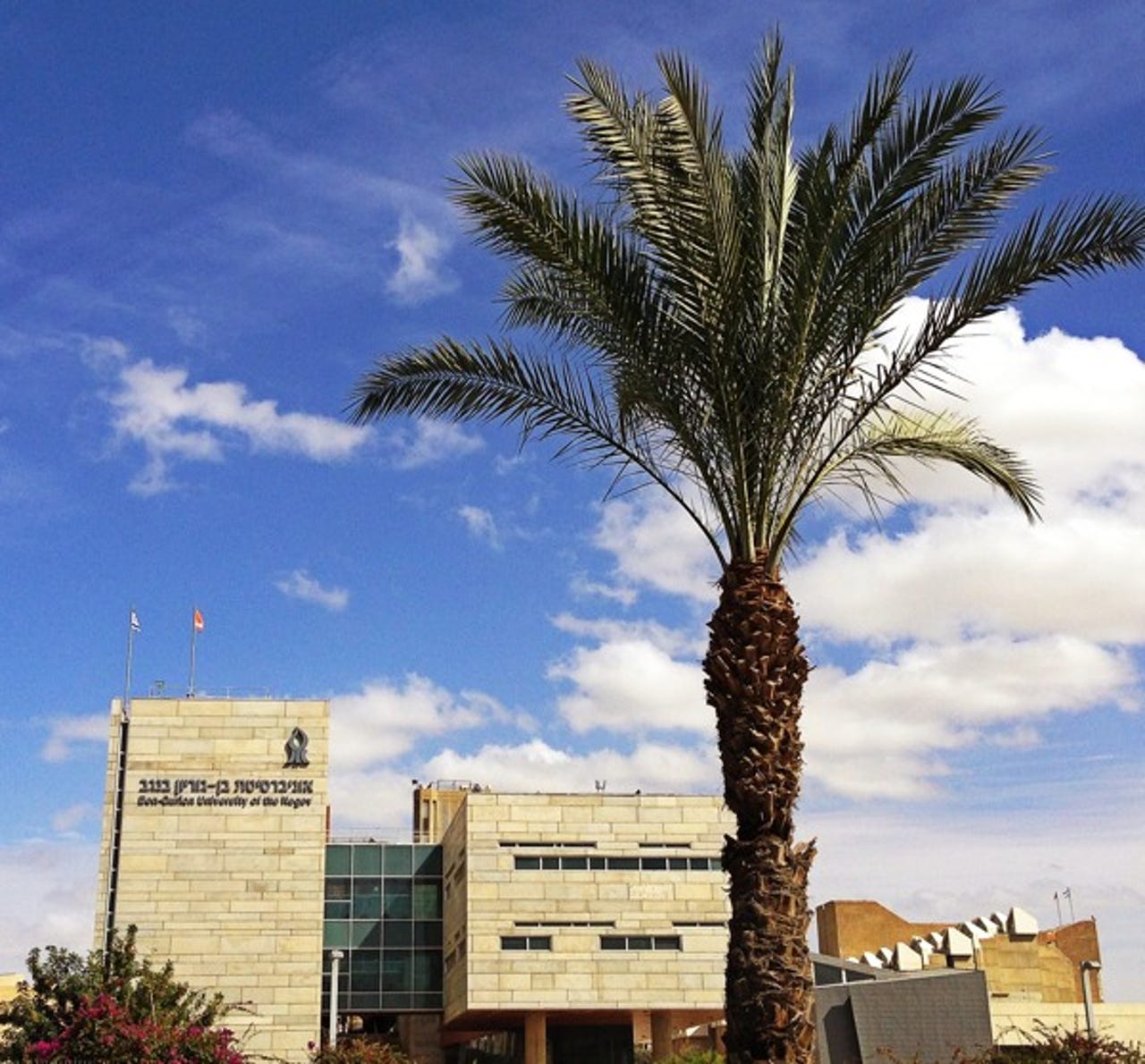Hands on the future: Transparent armor and a fully autonomous car

I've spent this week on a tour with researchers and engineers in Israel to learn about some technologies that will shape the future. Over the next couple weeks I'll be writing a series of articles on what I've discovered, but I thought I'd give you a glimpse of two really interesting things. Both of these technologies come from the research labs at Ben Gurion University (BGU).

Transparent armor
Dr Nachum Frage of the Materials Engineering Department at BGU has created a clear ceramic substance that is so strong it can stop a missile. This has obvious applications for windows in buildings and cars, and it's especially applicable in Israel, since missiles are fired at it by its neighbors on a weekly basis.
The bottom line is that this substance can create transparent armor. Since it is made out of a specially mixed powder that is heated according to a certain pattern and then molded like ceramics, there is some flexibility in shape and thickness.
The world already has bullet-proof glass on high-security limousines and the windows of high-security buildings, but making a window replacement that is strong enough to stop a missile is an important innovation. Professor Frage said that the new material also won't weaken and deteriorate over time as badly as glass does.
Frage also said that there are potentially "many, many" civilian uses for the new material. The first one he pointed out was for touchscreens in computing devices such as smartphones and tablets. Frage showed examples of the transparent armor that were as thin as 1mm. Once the material can be mass produced in an economical way, it could potentially replace today's glass touchscreens with a virtually unbreakable surface. That would be a welcome development for both consumers and phone makers, since broken screens are the most common fail point for today's mobile devices.
The entities bringing Frage's invention to market are BGN Technologies (the university's commercialization arm) and the Israeli firm Raphael.
A fully autonomous car
Dr Hugo Guterman of the Department of Electrical and Computer Engineering at BGU showed a fully automated jeep that goes far beyond what Google's famous driverless cars can do. While Google's vehicles are still staffed with a human being — though a computer actually does the driving — the BGU prototype does not require a human being to be in the vehicle, and it is not even guided by remote control.
Instead, the BGU jeep is completely self-contained and automated. The researchers program it where to go and it goes. It can even understand how to behave at a four-way stop — which is one of the most complicated traffic scenarios that is common in the US (although not found in Israel).
The BGU team refers to this as an autonomous and decentralized Automated Guided Vehicle System (AGVS). It clearly is loaded with lots of artificial intelligence for problem solving, route guidance, and right-of-way determination. BGU showed off its award-winning Jeep from several years ago, as well as its latest model, which cost $2 million to build, according the Guterman.
These aren't just lab experiments. The Israeli government has already taken this concept and used it to build eight to 10 of these vehicles and equipped them with high-end cameras. The AVGS vehicles are being used to help patrol the country's borders.
However, the concept also has potential civilian uses as well. The most impressive could be as an emergency services vehicle. The AGVS could go into dangerous situations like fires, chemical spills, and natural disasters where it would be too dangerous to send humans. This could provide valuable on-the-ground monitoring and information of dangerous situations and even assist in rescues.
The vehicles could also be used in transportation services, such as taxis. Most car accidents are caused by human error, so these vehicles are generally safer than human-operated vehicles. But, Guterman noted that putting these vehicles on the road with civilians faces a big obstacle when it comes to insurance and liability. He also added that the vehicles are better in open spaces than on city streets, at least for now.
More reports on the way
Over the next couple weeks, I'll be writing a multi-part series on more of the interesting technologies that I learned about during my trip to Israel. This will include a look at Israeli startups and its strong track record in technology innovation, as well as information on what Israeli researchers are working on in cybersecurity, big data, and more. The series will publish over on TechRepublic. For immediate access, you can follow my updates on Twitter or Google+ where I will share the links as soon as I publish each article.
UPDATE 3/7/2013, 5:15AM EST: Based on a correction from BGU, the AVGS cost $2 million to build, not $200 million.